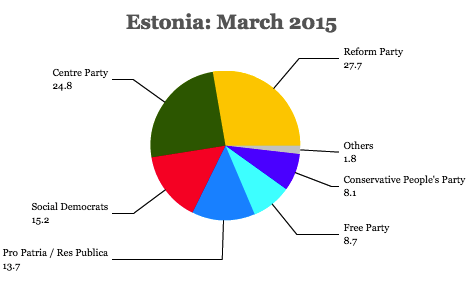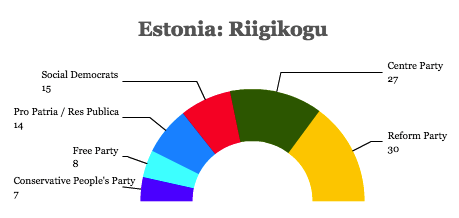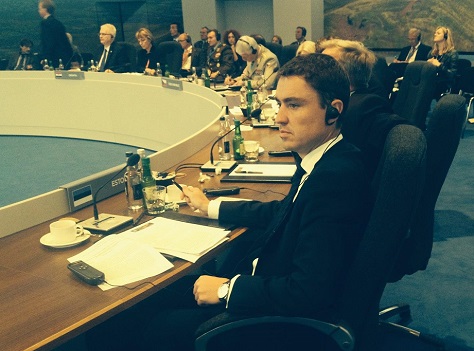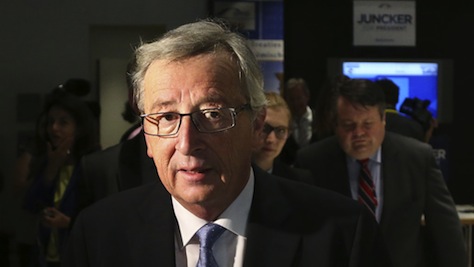Estonia’s parliamentary election proves what is becoming a nearly iron-clad thesis about Baltic politics: so long as social democratic parties in the Baltic States nurture ties with Moscow and pitch themselves to the narrow pool of ethnic Russian voters, centrist and center-right governments will continue to win elections and govern.![]()
So it was in Estonia on March 1, as it became clear that the center-right Eesti Reformierakond (Estonian Reform Party) would win its third consecutive national election, the first under its 35-year-old prime minister Taavi Rõivas (pictured above in Ukraine last year), who is expected to continue leading Estonia’s government.
* * * * *
RELATED: Russian threat dominates Estonian election campaign
* * * * *
Despite polls that showed that the center-left Eesti Keskerakond (Estonian Centre Party), led by former prime minister and Tallinn mayor Edgar Savisaar might emerge as the leading party, Reform bested the Centre Party by nearly 3%.
Nevertheless, both the Reform Party and its junior partner in government, the Sotsiaaldemokraatlik Erakond (Social Democratic Party), lost some ground — the two parties will, in aggregate, lose seven seats and six short of an absolute majority in the Riigikogu, Estonia’s 101-member unicameral parliament.
Luckily for Rõivas and the Reform Party, there are two new parties in the Estonian parliament, and one of them is a strong fit for a three-party coalition. The liberal Eesti Vabaerakond (Free Party), founded last September by Andres Herkel, an Estonian intellectual, could easily find common ground with Reform. Continue reading Estonian election results: Reform Party wins third term







